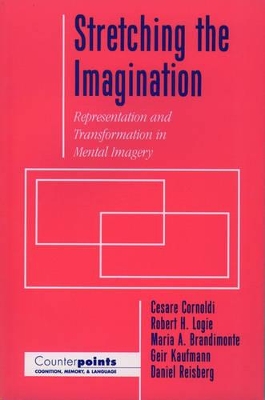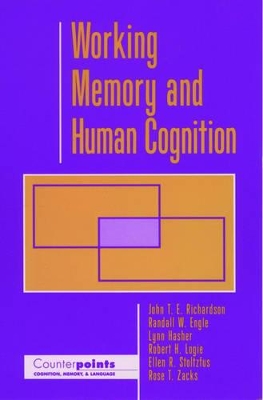Counterpoints: Cognition, Memory, and Language
2 total works
Stretching the Imagination
by Cesare Cornoldi, Robert H. Logie, Maria A Brandimonte, Geir Kaufmann, and Daniel Reisberg
Published 20 June 1996
One of the most lively areas of debate in psychology today concerns the relationship between perception and mental representation. This issue spans virtually all domains of psychological investigation, from development to perception, from computer to neuropsychological models of human cognition.
Recent studies have shown that there is a strong relationship between memory and mental representation, but others have shown that images are open to reinterpretation and manipulation, and therefore are not merely static images or mental representations of memories. Core chapters by three researchers in the midst of this debate, Maria Brandimonte, Geir Kaufmann, and Dan Reisberg, make up the central portion of this fascinating book.
Recent studies have shown that there is a strong relationship between memory and mental representation, but others have shown that images are open to reinterpretation and manipulation, and therefore are not merely static images or mental representations of memories. Core chapters by three researchers in the midst of this debate, Maria Brandimonte, Geir Kaufmann, and Dan Reisberg, make up the central portion of this fascinating book.
Working Memory and Human Cognition
by John T. E. Richardson, Randall W. Engle, Lynn Hasher, Robert H. Logie, Ellen R. Stoltzfus, and Rose T. Zacks
Published 1 January 1996
The purpose of this contribution to the Counterpoints series is to compare and contrast different conceptions of working memory. This is one of the most important notions to have informed cognitive psychology over the last 20 years or so, and yet it has been used in a wide variety of ways. This, in part, is undoubtedly because contemporary usage of the phrase `working memory, encapsulates various themes that have appeared at different points in the history of research into human memory and cognition. This book presents three dominant views of working memory.

